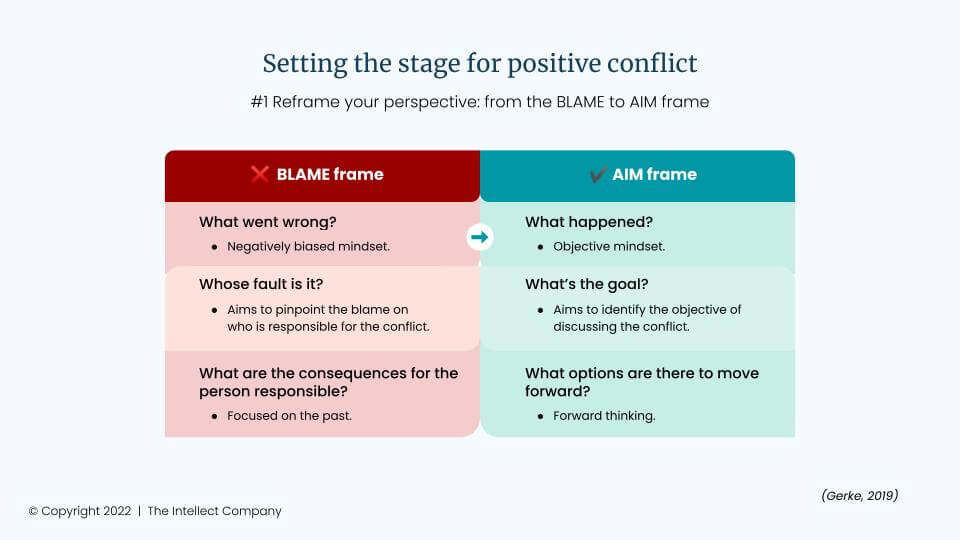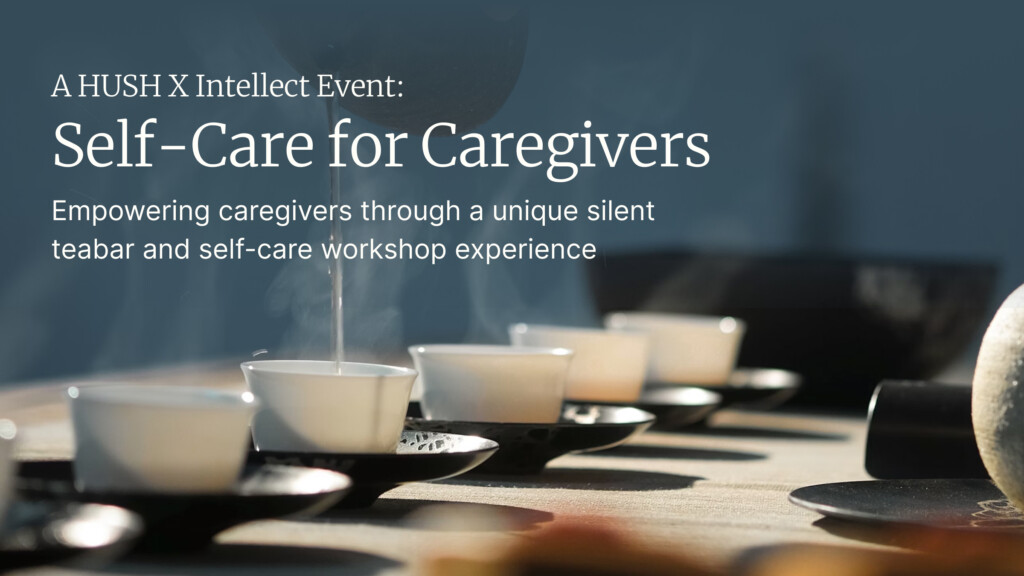Intellect’s Clinical Psychologist Linda Rinn explains how to collaborate in work-related conflicts to achieve positive outcomes.
For some, workplace conflict may be part and parcel of a typical workday. Whether it’s a clash with our manager, peer, or team member, conflict is often seen as a thorn in our side, impacting our relationships, productivity, and performance.
“It’s been estimated that managers spend 25%-40% of their time every week resolving workplace conflict. That’s about two out of five working days”, Linda Rinn, Intellect’s Clinical Psychologist stated.
Enter positive conflict — a new way of thinking about disagreements. Positive conflict is constructive and leads to new ideas, innovative problem-solving, and even personal and professional growth within your teams.
“Positive conflict doesn’t always mean that the conflict was a good thing, but that the conflict led to something beneficial”, Linda said. By exploring opposing ideas, two or more parties could move from impasse to breakthrough.
Step one: Identify your default style
Generally, conflict is caused by individual and organisational factors. Individual factors include styles, perceptions, goals, and personal values; while organisational factors include pressure, resources, roles, and policies.
The five conflict management styles are: Competing, Avoiding, Collaborating, Accommodating, and Approaching. People have one or several default styles, and it helps to know yours.
“Our work and personal approaches can be very different. There is no correct answer to what the best style is. All five modes are useful in different situations”, Linda emphasised.
Matching strategies to scenarios

There is no one conflict management style that suits all individuals, teams, and situations. To identify an optimal approach, we have to consider factors such as the time, cost, impact, and importance of the conflict.
The Thomas-Kilmann Model of Conflict Management, which expounds on the five styles outlined earlier, does just that.
- Competing is a win-lose approach wherein we act to achieve our goals without cooperating. This strategy can be unpopular but useful when you need to take quick action or make decisions urgently.
- Avoiding is neither pursuing one’s goals nor helping others achieve theirs. It can be useful for issues of low importance and helps to reduce tension in emotionally-charged situations.
- Collaborating is a win-win approach where we reframe the issue and create space to accommodate everyone’s goals. It requires trust, time, and effort to reach a consensus, and is useful for complex situations where everyone’s needs have to be met.
- Accommodating is cooperating to a high degree and sometimes at our own expense. It may work against our goals but can be useful if the other party is the subject matter expert or has a better solution. It is effective for preserving relations.
- Compromising is a lose-lose scenario where neither party gets what they want in the middle ground. It can be useful in situations that need a temporary solution.
Step two: Set the stage
Go from BLAME to AIM
In any relationship, conflict is a natural occurrence and can even be a sign of a healthy dynamic. However, instead of playing the blame game, it’s crucial to remain objective and future-focused. Rather than dwelling on what went wrong and who is at fault, focus on learning what happened and aligning on a shared goal.

“The first few questions after an incident and the first few minutes of our discussion are really important. We don’t want to be in the blame frame because it’s going to be really hard to move out of it. If you start with the aim frame, the conversation is going to be much more effective and positive”. Linda explained.
The blame frame, on the other hand, can put your team’s psychological safety at risk.
“The rest of the team will notice when the blame frame is being used. It lets us know that if ever I make a mistake, I’m going to make sure I don’t own up to it.”

Consider the other party’s default style
The other party’s approach may inform yours, and you can assess this by:
- Looking for patterns in other person’s behaviour
e.g. “How do they handle a tense discussion in a meeting?” - Getting input from others to confirm or dispute your observations.
e.g. “I saw Jim avoiding Grace after the disagreement. Is that typical?” - Communicating with and asking them directly.
e.g. “You may have noticed that I can be direct, and I’m trying to work on being more tactful. Based on your response, would it be right to say that you tend to shy away from conflict?”
“I know it sounds weird and awkward to have this open conversation, but it can be really, really helpful,” said Linda. As a general rule of thumb, you can start by stating your own preference before asking about your team members’. Better yet, have this conversation as a department even before conflict arises, so everyone will be on the same page when it does.
Step three: Communicate collaboratively
How can two or more parties achieve a win-win outcome in conflict? This 4-step process is a good start:
a) Your turn: Invite the other person to speak first

“Of course, it’s important to listen to the other party, but the psychology is that if you let them speak first, it usually lowers their feelings of being attacked”, Linda shared.
Listening to the other person first shows interest and keeps the conversation open.
”A lot of times, when we rush in with our opinions, the other person will become defensive and unhappy and we’re not getting anywhere.”
When we skip this step, we come across as stubborn and aggressive. The other party may then resort to stonewalling – the act of shutting down and refusing to communicate. Instead, we can demonstrate our understanding by practising active listening skills. This means asking additional questions and paraphrasing their answers. When the other party feels seen and heard, they will be more receptive when it’s our turn to speak.
b) My turn: Present your case
Once we’ve listened to the other person, it’s time for our turn to talk. Here, you’d want to get to the point and speak firmly and persuasively. Remember to focus on the issue rather than the other party as a person.
c) Mutual planning: Explore a solution together

Once you’ve identified your default approach, brainstorm different solutions together and negotiate on a common ground. This process is highly dependent on the conflict management styles you choose. Based on your judgement, you could take a step back or be more assertive.
If the conversation starts slipping into the BLAME frame, you can ground it in the AIM frame by asking questions such as:
- How do we look forward?
- How can we solve this?
- What would be the next step to take?

d) Follow through: Take action and evaluate
A crucial step we often forget is following through on the said conflict. After coming to an agreement, you could evaluate it a few days, weeks, or even months later.
- How effective was the conflict?
- Was our solution helpful?
- In hindsight, could I have been more accommodating or assertive?
This reflection helps you learn more about your conflict style, and how you can manage a similar situation differently in future.
Coaching as a resource
Imagine a workplace where conflict is viewed as an opportunity for growth rather than a source of stress. Now, fundamental to that is a culture of psychological safety and employees who are willing to have difficult conversations. And that’s where coaching comes in.

At Intellect, our team ICF-accredited behavioural health coaches have equipped employees across Asia Pacific with strategies to communicate effectively, manage emotions, and find mutually beneficial solutions. Coaching provides a safe, supportive, and neutral environment for developing the self-awareness and empathy needed to understand others, as well as the confidence to address conflict head-on.
Learn more about us here.





